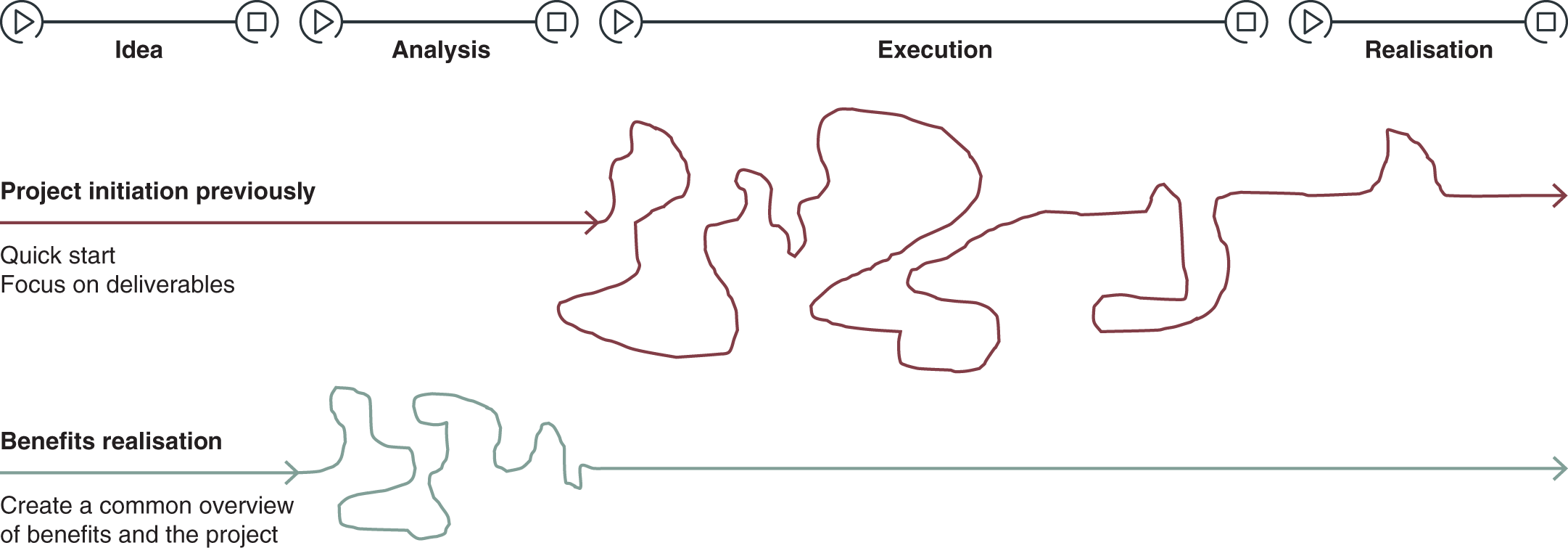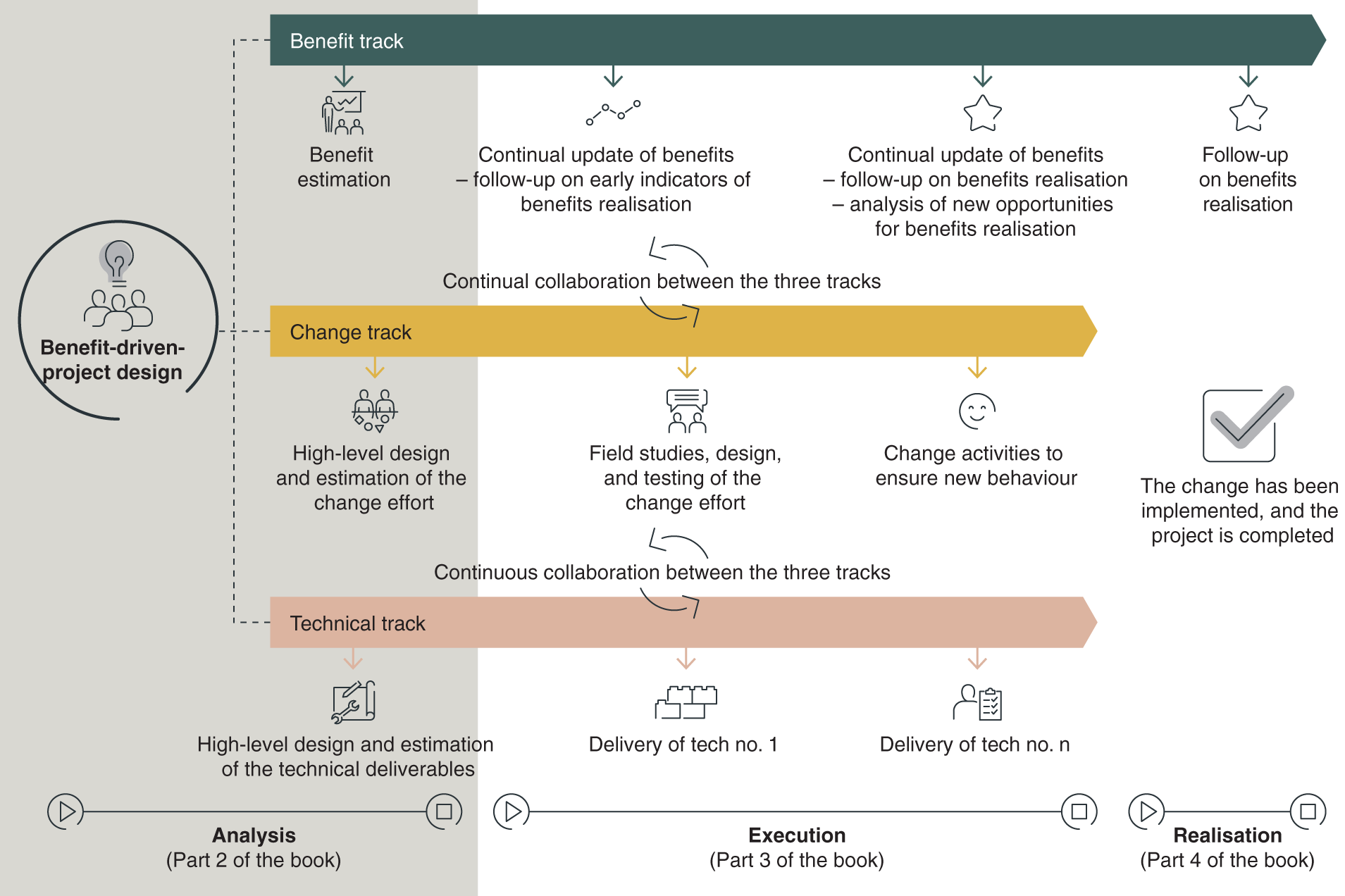2
A New Way of Initiating Projects
If we start by agreeing on the value we aim to create, we have taken a big step in the right direction.
Start with the end in mind.
Steve Jenner, author of Managing Benefits (2014)
If we start by agreeing on the title of a new deliverable, we are postponing many important conversations. We may get going a lot faster and satisfy the need to say, ‘We are up and running’ to the person in senior management who owns the project. The problem is that the conversations we postpone do not just go away. They re-emerge, and the dialogue about why we are proceeding with the project and what benefits should come out of it will not be shorter or less complicated by being postponed – on the contrary.
We need to start by setting the right direction for the project and clarifying the desired change. In that way, we give the project the best possible foundation for successful implementation. Furthermore, we save the project, the steering committee, and its surroundings many detours and frustrations later in the process. It requires that we invest in conducting workshops and using the working hours required. It also requires that we get the benefit and cost estimates, making it possible to make an informed choice about initiating the project and setting the right direction (Figure 2.1).

Figure 2.1 Projects with different ways of initiation.
Source: Based on Olsson et al. (2018).
The Analysis Phase
Before the analysis phase, the first step includes screening and evaluating ideas, keeping only the most promising ones. This chapter assumes that we have already completed this process. In the analysis phase, we then create the foundation for deciding whether to proceed with the project.
To illustrate the activities in the analysis phase, we will use the benefit-driven change model that I introduced in Chapter 1 (Figure 1.1). The model shows the project lifecycle from the time an idea turns into a project, i.e. from the beginning of the analysis phase. The analysis phase on the far left of the model in Figure 2.2 first includes designing the project to realise benefits. After this, the remaining tasks in the analysis phase can be divided into three tracks with different, but equally important, types of tasks to be solved in the project. This is illustrated by the three parallel arrows in the model.
In the rest of Part 2, I will go through how the tasks in the analysis phase may be performed to create the best conditions for creating value with the project. First, I will go over the task of designing the project, which can be divided into two steps: developing the purpose and the benefits realisation workshop. Next up are the tasks in the benefit track and change track. Along the way, I will walk through the strong links to the tasks in the technical track.

Figure 2.2 Tasks in the analysis phase.
